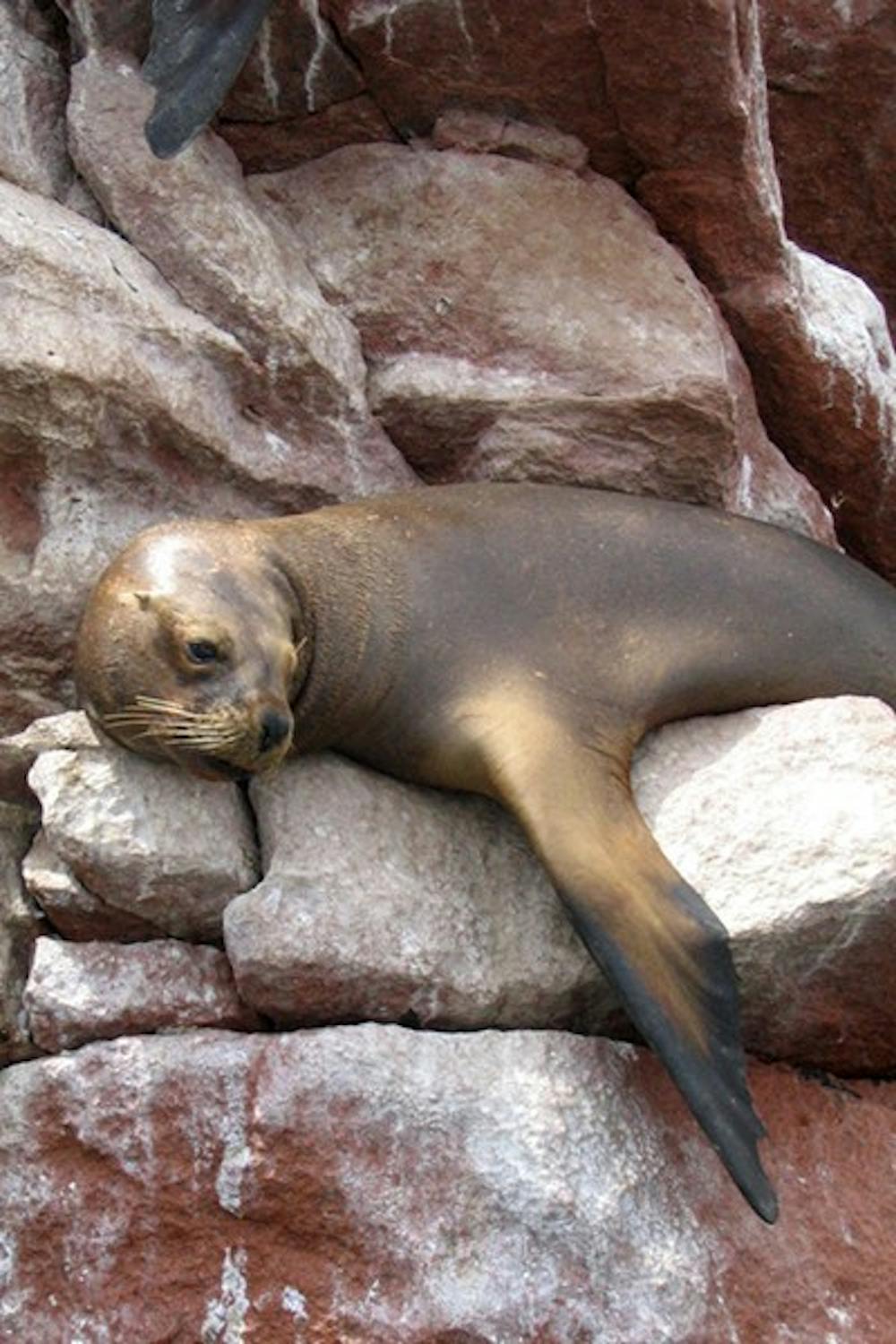 (Photo Courtesy of Julie Newberg/Photo by Andy DeLisle)
(Photo Courtesy of Julie Newberg/Photo by Andy DeLisle)Several ASU researchers challenged popular belief last month by asserting that seals and sea lions, not Christopher Columbus, were guilty of bringing tuberculosis to the Americas.
Anthropology professor Anne Stone, who worked on this research with others at ASU and the University of Tübingen in Germany, said the long process that culminated in this revelation began in 2005 with the collection of 800- to 1,000-year-old human bones.
She said the ancient bones that had been affected by tuberculosis, which was one of several diseases that devastated Native American populations post-1492, were identifiable by several distinct characteristics.
“Tuberculosis can either kill people very quickly, or it can become a chronic disease,” Stone said. “When it becomes a chronic disease, it can begin to leave these characteristic lesions on the spine. It almost looks like pieces of the vertebral body have been eaten away, and when this continues over a period of time, the spine almost seems to collapse. It gives it a sort of hunched-over appearance.”
After collecting the sample bones, Stone said parts of the bones were intentionally pulverized in order to extract DNA samples.
She and her team then worked together to separate the tuberculosis DNA from human DNA and the DNA of organic matter found in the soil in which the bones had been buried.
“What we did after we got the genome sequence was compare that to all the published tuberculosis genome sequences available,” Stone said.
Among those genome sequences was tuberculosis DNA from animals like seals and sea lions, and Stone found that this DNA was most closely related to that found in her ancient skeletons.
 (Photo Courtesy of Julie Newberg/Photo by Sara Marsteller)
(Photo Courtesy of Julie Newberg/Photo by Sara Marsteller)ASU anthropology professor Jane Buikstra, who collected bone samples used in this research and participated in their analysis, said she has been interested in studying the origins of tuberculosis in the Americas since the late 1970s.
She said she has enjoyed trying to answer questions about these origins, though much of what she has learned since the project’s genesis has defied her initial expectations.
“I expected to find that the strain was more closely related to those found in humans of Europe and Asia,” she said. “To find that it was a strain like one found in sea lions was very surprising.”
However, Buikstra said this surprise was her favorite part of the research process.
Kelly Harkins, an ASU alumna who wrote her dissertation on this research, said she also enjoyed this surprise, but perhaps her most memorable experience researching early tuberculosis came when she had to transport bone samples from the U.S. to Germany for additional testing at the University of Tübingen.
“I had to convince everyone not to x-ray my samples,” she said, laughing. “'What’s in the box?’ they asked. ‘Uhm… Human bones.’”
After years of hard work, Harkins said she looks forward to this project's future development, as it has focused solely on South American remains until this point.
“If we find out that the same strain that occurred in Peru occurred in, say, Illinois 100 or 200 years later, that would be really incredible,” she said. “The next step is to try to confirm the hypothesis that this strain was one that occurred throughout the New World.”
Reach the reporter at megann.phillips@asu.edu or follow her on Twitter @megannphillips




